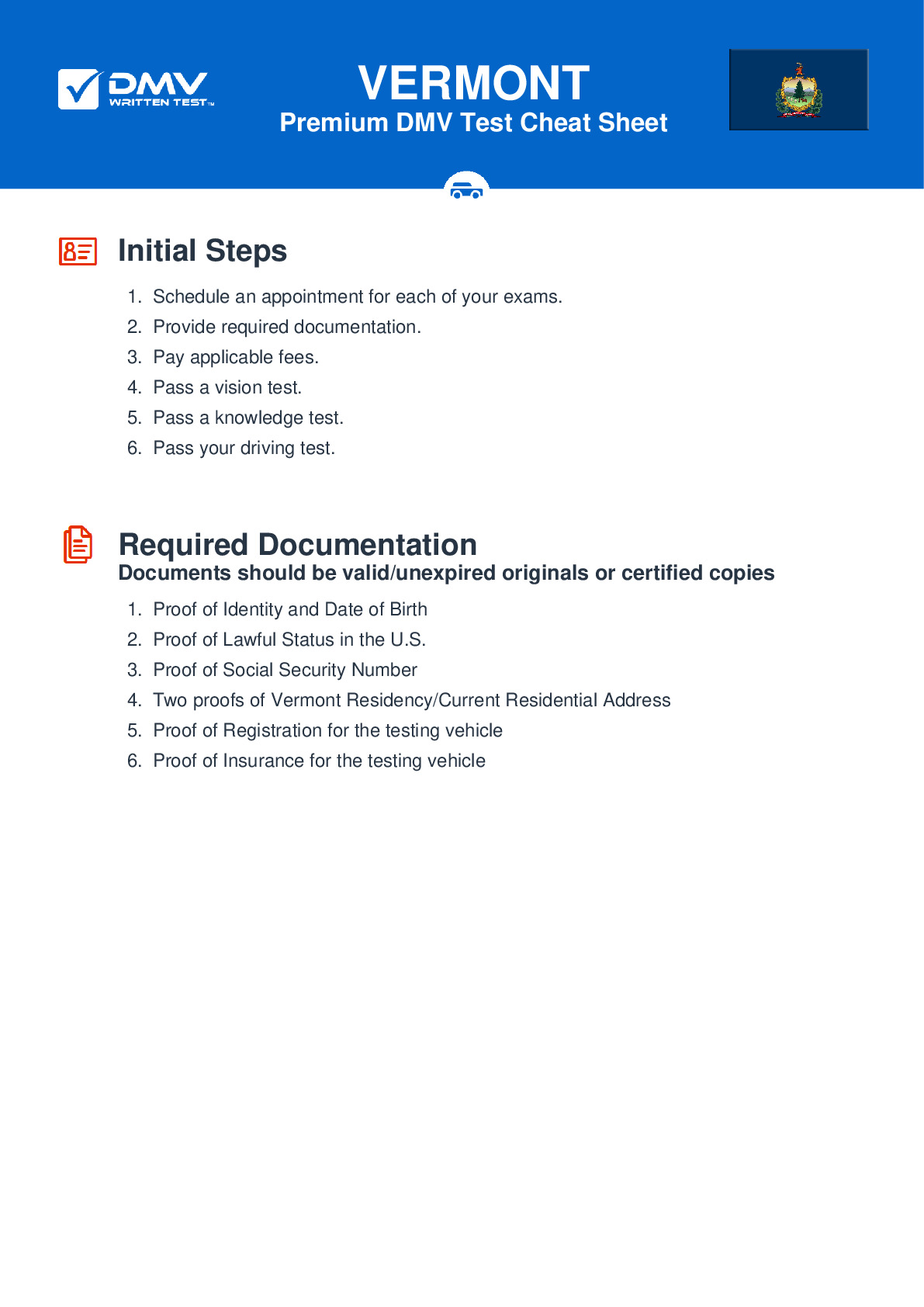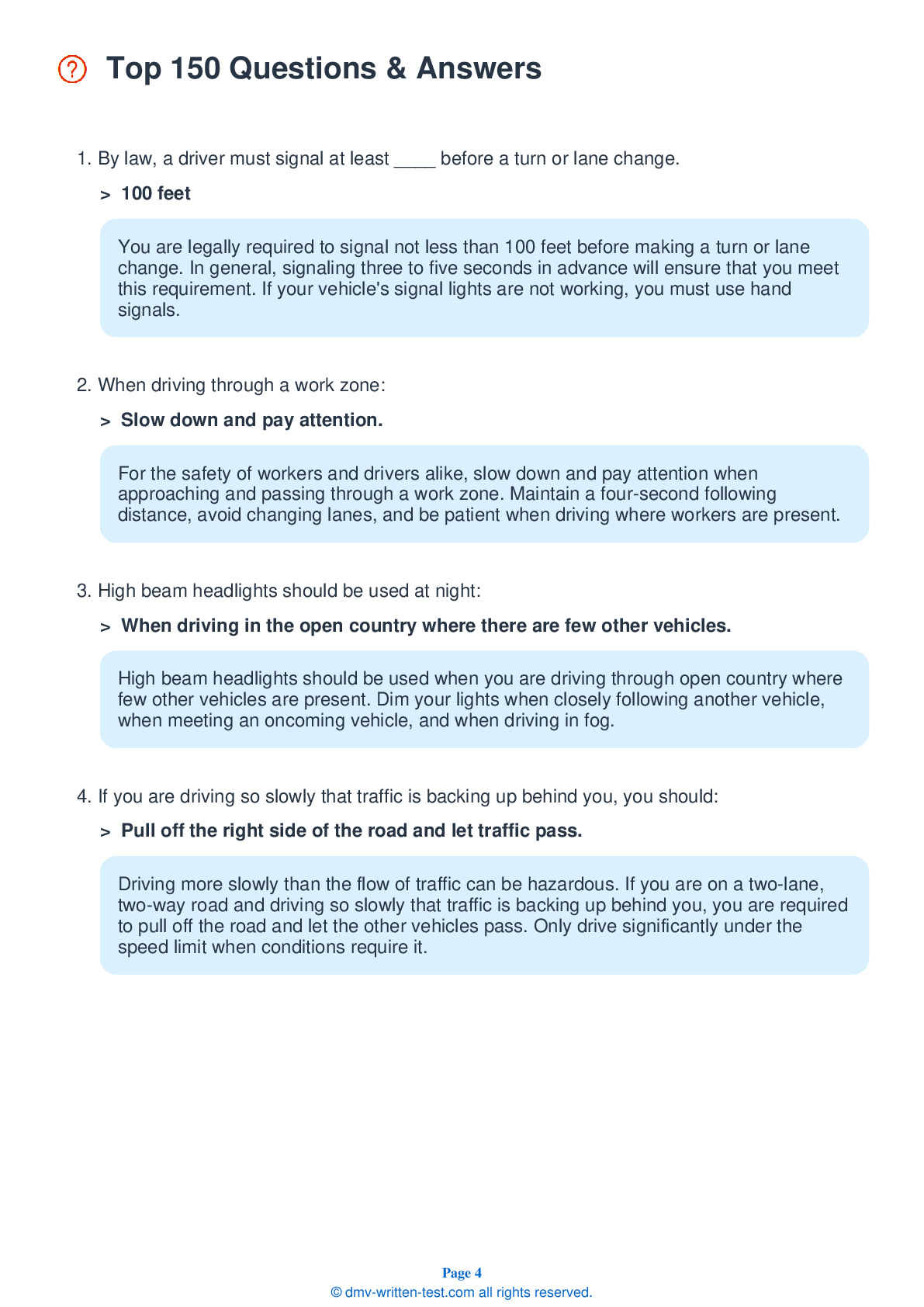2025 Vermont Permit Test 23
The following questions are from real DMV written tests. These are some of the actual permit questions you will face in Vermont. Each permit practice test question has three answer choices. Select one answer for each question and select "grade this section." You can find this button at the bottom of the drivers license quiz. For a complete list of questions and answers for Vermont please visit https://cheat-sheets.dmv-written-test.com/en/vermont/car.
Number of Tests
Number of Question
Passing Score
14. If two drivers arrive at the same time to an open intersection:
Explanation
If you arrive to an open intersection at the same time as a vehicle to your right, you should yield the right-of-way to that vehicle. You may then proceed when it is safe to do so.
15. A driver approaching a green traffic light:
Explanation
When turning left at a green traffic light, you must yield the right-of-way to oncoming traffic. You may proceed when the way is clear.
16. Lanes of traffic moving in the same direction are divided by ____ lines.
Explanation
Solid white lines are used to separate lanes traveling in the same direction (as well as to mark the right edge of the road). Broken white lines separate lanes traveling in the same direction and may be crossed to pass. Yellow lines separate lanes of traffic moving in opposite directions.
17. Two solid white lines painted across a traffic lane show the boundaries of a crosswalk. As a driver, you should know that:
Explanation
Crosswalk lines show pedestrians where to safely cross a road or street. Crosswalks may be marked by horizontal lines, vertical lines, or a combination of the two. You must always stop for pedestrians who are in a crosswalk.
18. How can you lower the risk of hydroplaning?
Explanation
Hydroplaning happens when a vehicle glides on top of a thin layer of water between its tires and the road. Tires with low air pressure or bad tread can increase the risk of hydroplaning. Speeding also increases the risk.
19. Stress can affect your driving by:
Explanation
Emotions can have a great effect on your driving ability. You may not be able to drive well if you are overly worried, excited, afraid, angry, or sad. Stress can lessen your concentration on the task of driving. It is better to wait to drive than to risk driving while you are emotionally unstable.
20. As you drive, you're required to stop your vehicle:
Explanation




